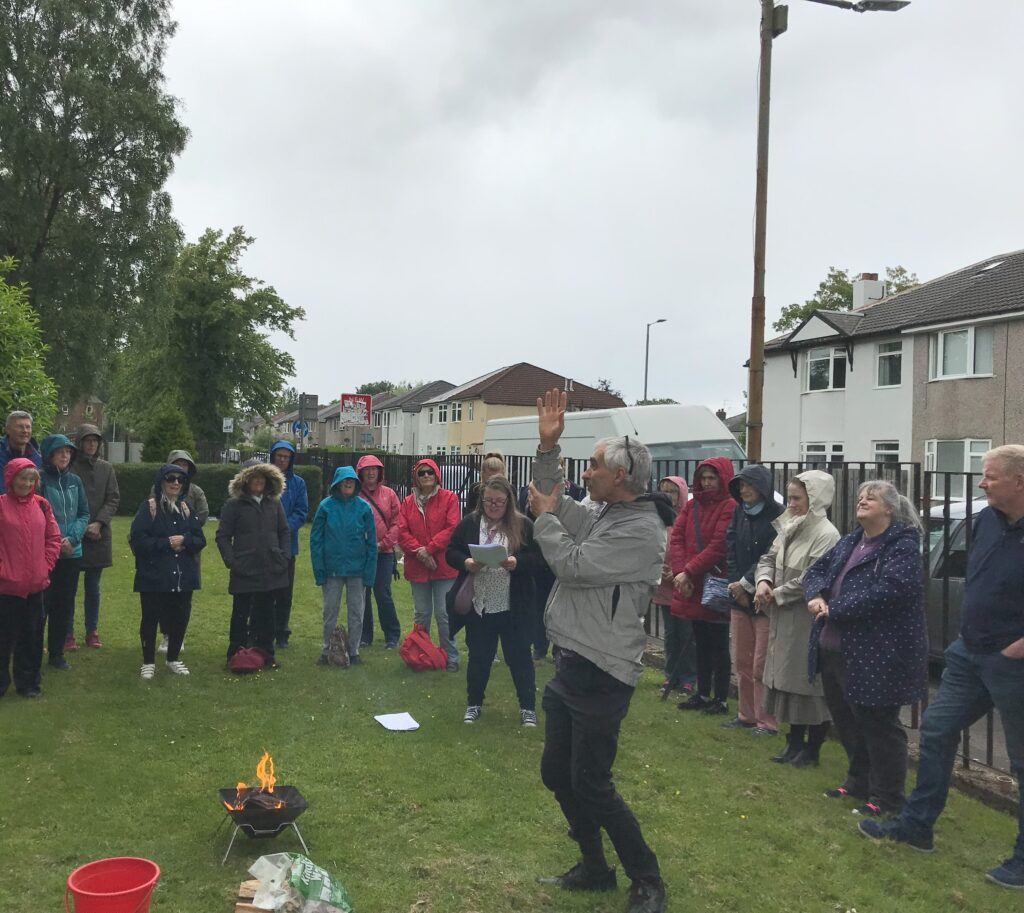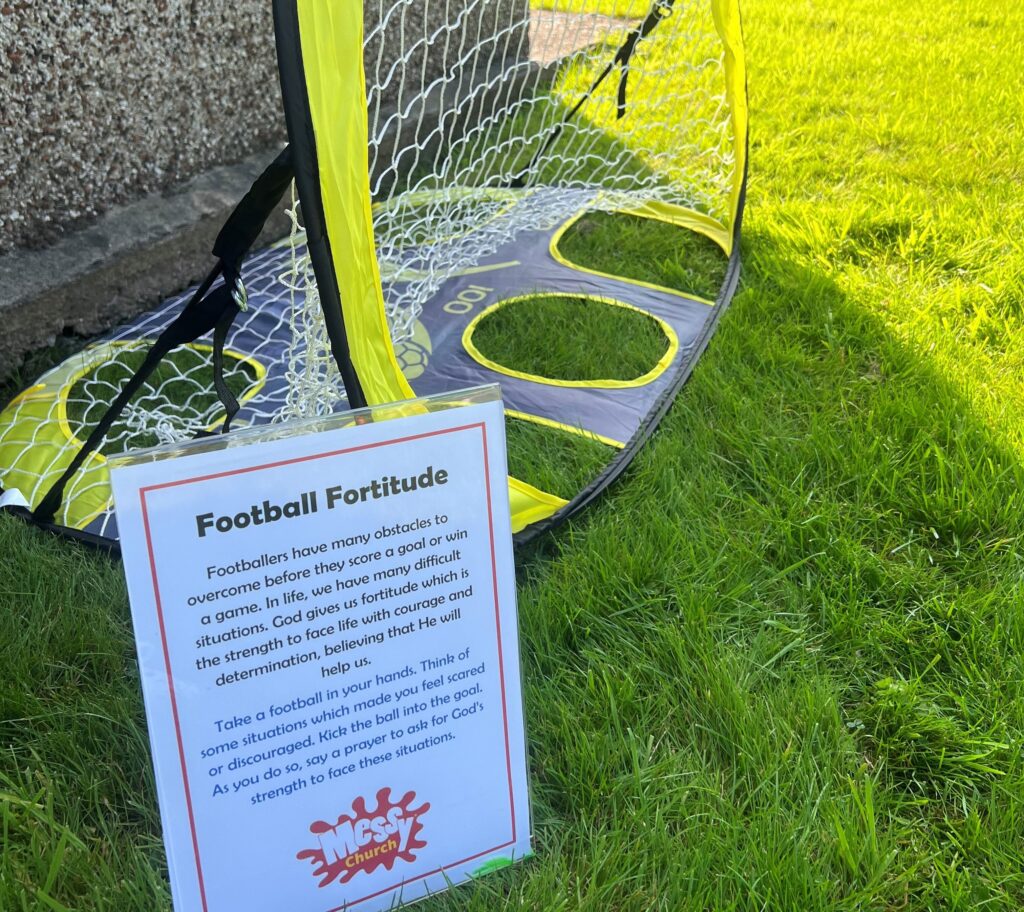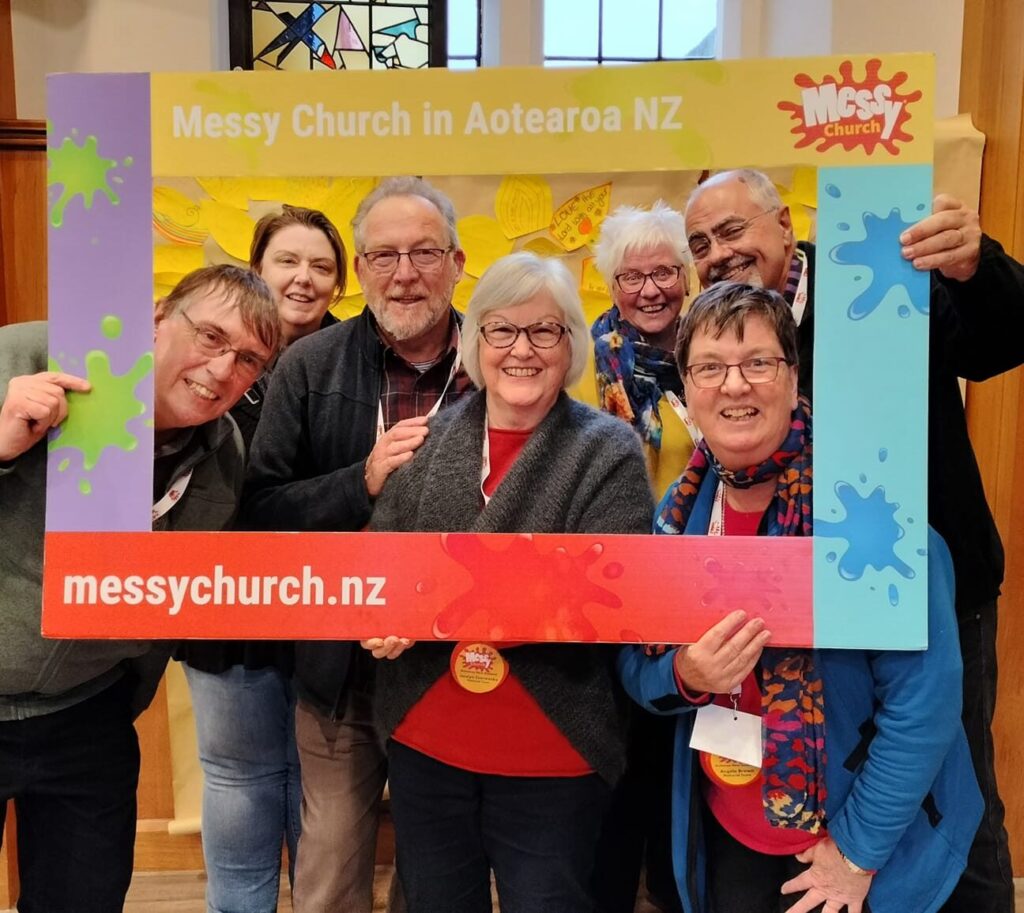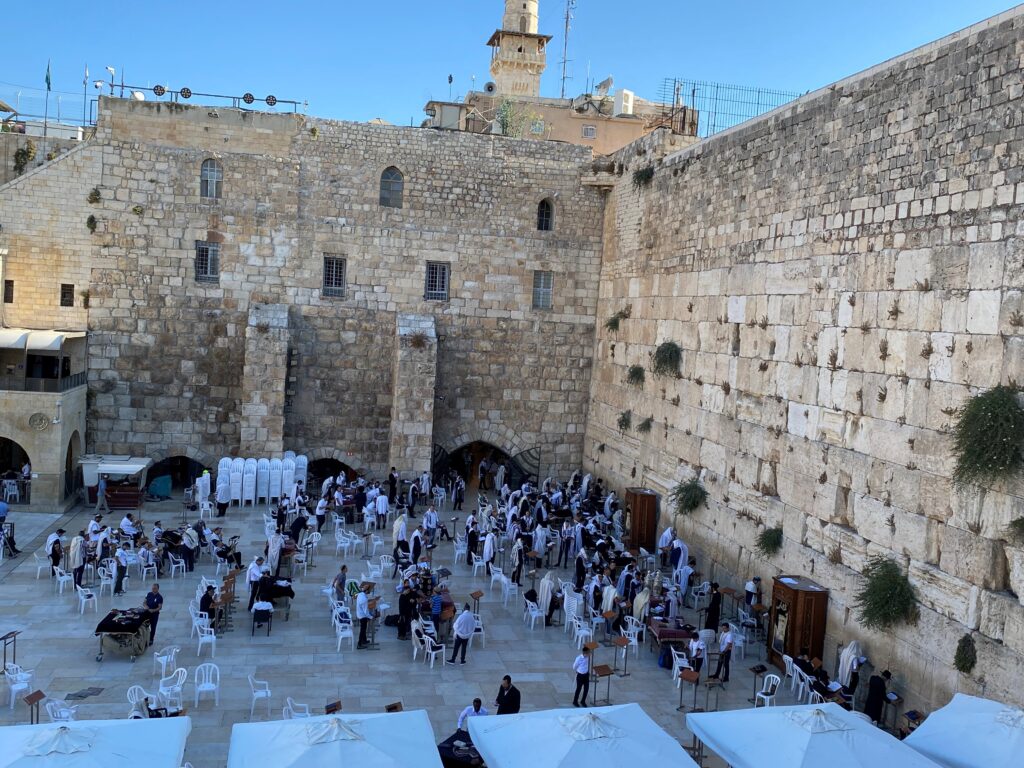Walk about Zion, go around her, count her towers, consider well her ramparts, view her citadels, that you may tell of them to the next generation. For this God is our God for ever and ever; he will be our guide even to the end. Psalm 48:12-14.
Mount Zion was the highest point in ancient Jerusalem. However, the name Zion, refers to both a hill in the city of Jerusalem and to the city itself, and is often used in the Bible to mean ‘holy place’ or ‘kingdom of heaven.’ I had always imagined Mount Zion to be a solitary deserted mountain, where an ancient prophet might go and have a holy moment with God. However, as our study group weaved its way through the souk and started to climb upwards through the narrow alleyways, bustling with shopkeepers and street sellers, I realised I’d got my biblical mountains muddled up.
We emerged through the Jaffa gate at David’s Citadel. As Psalm 48:14 suggests, the citadel provided and symbolised security, and is described metaphorically as the citadel in which the righteous find safety (Proverbs 18:10). As we passed a group of teenage Israeli soldiers, armed with semi-automatic weapons, I wondered who were the righteous and who felt safe in this city?
Once inside the Citadel, our first stop was to climb the ‘Tower of David’, first named in the 5th century AD by the Byzantine Christians, who believed the site to be the palace of King David. According to 2 Samuel 5:6-10, David captures Jerusalem from the Canaanite tribe of Jebusites in 1004BC. He moves his capital to Jerusalem, making it Israel’s political and religious centre and lives in the Fortress of Zion, which he calls the City David. The citadel that stands today dates back to the Mamluk and Ottoman period and is a collection of walls and ruins on the site of earlier ancient fortifications, repeatedly destroyed and rebuilt during the Crusades.
As we spilled out onto the ramparts, we were rewarded with a spectacular view of Jerusalem, set against the Mount of Olives, with the valleys and land beyond disappearing into a heat haze. So much history has happened here! I can now imagine how easy it would have been for a bored King David to look down from the roof of his palace and spy the beautiful Bathsheba bathing in the privacy of her courtyard. I’m struck by the contrasting stories of temptation in the same old city of Jerusalem, between King David and Jesus. David, the human, gives into his temptation, misuses his power and ends up on a downward spiral of lies, schemes and premeditated murder. A thousand years later, the devil takes Jesus, son of God, to the highest point of the temple in Jerusalem, and challenges him to use his power to save himself from a perilous fall. Jesus, full of God’s spirit responds, ‘do not put the Lord your God to the test.’ It made me wonder about how we use the ‘power’ or sphere of influence that we have, either for ourselves or to serve others?
In the cool of the air-conditioned rooms, we spent time exploring the fabulous new digital interactive displays that projected images onto ancient walls and ceilings, teaching us about wars and religious festivals. It got me thinking about the purpose of walls, why we build them, who are we trying to protect and who are we trying to keep out. Later that day, near the centre of the old city, we discovered a remaining stretch of the original city walls that Nehemiah, in 5 BC, famously project-managed the rebuilding in 52 days. He wanted to rebuild the walls as he felt their destruction reflected the weakness of his people and misrepresented God as weak. This wall was to protect Jerusalem from the enemy’s attack.
We then moved onto the Western Wall, the last remaining outer wall of the ancient Jewish temple, also rebuilt by the returning exiles after Solomon’s (David’s son) First Temple that had been destroyed by Nebuchadnezzar, the King of Babylon. This 488m long stretch is the retaining wall of Temple Mount, on which now stands the Al-Aqsa Mosque compound. Built of enormous limestone blocks that tower 32m high, this wall separates the holy sites of 2 religions. It represents the holiest place where Jews are permitted to pray and has been called the ‘Wailing Wall’, referring to the practice of Jews weeping at the site. As we approached to pray, the men and women in our group were separated by a temporary barrier, a mechitza, blocking the view from one section to the other. The reason for this is that a man (remember King David’s temptation for Bathsheba), might be distracted during prayer if he spots a beautiful woman. Unlike the men’s section, the women’s side was unsheltered from the heat of the afternoon sun, and we were intrigued by watching how the women walked backwards from the wall as far as they could after praying, as an act of reverence. This wall is considered holy.
The following day, I took a long, hot walk along the ramparts of the northern section of the Crusader wall. In the past it was built to keep enemies out and a high point from which to defend the city. Today it defines the old city from the new city of Jerusalem. We found ourselves looking down onto people’s roof terraces, washing lines and cramped houses within the walls, whilst on the outside, we looked out on a smart new shopping precinct outside the Jaffa gate. Here was a wall that defined contrasts.
Nestled next to the Crusader wall, near the Damascus gate, is the Spafford Children’s Centre, a project that helps poor and disadvantaged Palestinian children and families learn, grow, and thrive, through educational and psycho-social support. Our group was shown around by the energetic CEO, Shahd Souri, who described how the centre aims to bring hope and healing to many Palestinian children who are traumatised by the current conflict, through an holistic approach involving counselling, music, memory, or speech therapy. They were just setting up a holiday club that would offer a safe place to play against this wall, in a city devoid of playgrounds.
There was one further wall that I noticed when we stood at the top of the Tower of David. A few miles south of Jerusalem, you could just make out a very tall contemporary grey wall, interspersed with watch towers, snaking around the Judean hillside. Israel decided to build the barrier in June 2002, at the height of the second intifada or Palestinian uprising. It is a contentious element of the current Israeli-Palestinian conflict. Israel argues that it is necessary as a security barrier against Palestinian political violence, whilst Palestinians describe it as racial segregation and a representation of Israeli apartheid. We visited this wall a few days later, when we crossed the West Bank Barrier to visit Bethlehem. At once you notice the difference: on the Palestinian side, the housing is more incomplete and disheveled, and the wall is covered with graffiti. Full of slogans and references to political events, including art by Banksy, this wall has become a canvas for political street art and activism.
I wondered what God made of all these walls, whose story I am now sharing with the next generation and what metaphorical walls we build, either accidentally or deliberately in our ministries or in our personal lives? Who are we keeping out? Who are we trying to protect?
Aike Kennett-Brown
BRF Messy Church Ministry Lead
Aike visited Jerusalem in June 2023.
You may also like

Reuben on Resources…
15th Jul 2024
When football and faith collide
11th Jul 2024As you might have guessed from last week’s Facebook live, I love sport, in particular football and F1 so it’s been quite a few days! When faith and football collide, that makes me very happy!

Dr Dave’s Messy Adventure
9th Jul 2024How do you begin to encompass in a few words a trip lasting 4 weeks, across two vast counties and three time zones, as well at least three different climates.


